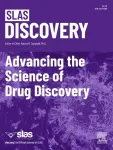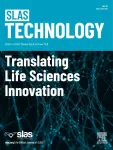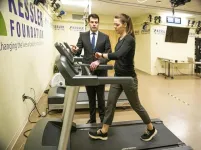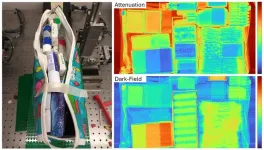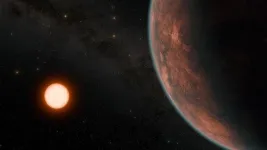(Press-News.org) While thousands of planets have been discovered around other stars, relatively little is known about them. A NASA catalog featuring 126 exotic, newly discovered worlds includes detailed measurements that allow for comparisons with our own solar system.
The catalog details a fascinating mix of planet types beyond our solar system, from rare worlds with extreme environments to ones that could possibly support life.
The planets were analyzed by a large, international team of scientists using NASA’s Transiting Exoplanet Survey Satellite (TESS) in collaboration with the W.M. Keck Observatory on Maunakea, Hawai’i. They are described in today’s edition of The Astrophysical Journal Supplement.
“Relatively few of the previously known exoplanets have a measurement of both the mass and the radius. The combination of these measurements tell us what the planets could be made of and how they formed,” said Stephen Kane, UC Riverside astrophysicist and principal investigator of the TESS-Keck Survey.
“With this information, we can begin to answer questions about where our solar system fits in to the grand tapestry of other planetary systems,” Kane said.
The research team spent three years developing the catalog. They analyzed more than 13,000 radial velocity (RV) measurements to calculate the masses of 120 confirmed planets, plus six candidate planets, spread out over the northern sky.
Though the planets themselves aren’t visible, they do have a visible effect. As they orbit, the planets tug on their host stars, causing them to “wobble.” When the star moves toward a telescope, its visible light turns slightly bluer; when it moves away from us, the light shifts slightly redder.
This is much like how sound behaves. Due to the Doppler effect, a fire truck’s siren gets higher-pitched as it travels closer and sounds lower-pitched as it drives farther away.
“These RV measurements let astronomers detect and learn the properties of these exoplanetary systems. When we see a star wobbling regularly back and forth, we can infer the presence of an orbiting planet and measure the planet’s mass,” said Ian Crossfield, University of Kansas astrophysicist and catalog co-author.
Several planets in the TESS-Keck Survey stand out as touchstones for deepening astronomers’ understanding of the diverse ways planets form and evolve.
A related survey paper authored by UCR graduate student Michelle Hill announces the discovery of two new planets orbiting a star like our sun. The first is a “sub-Saturn” planet with a mass and radius that are between those of Neptune and Saturn.
“There is ongoing debate about whether sub-Saturn planets are truly rare, or if we are just bad at finding planets like these,” Hill said. “So, this planet, TOI-1386 b, is an important addition to this demographic of planets.”
TOI-1386 b only takes 26 days to orbit its star. Meanwhile its neighbor, a planet with a mass close to that of Saturn, takes 227-days to orbit the same star.
Another survey paper authored by UCR graduate student Daria Pidhorodetska describes a planet about half the size of Neptune that takes a mere 19 days to orbit its star, which is much like our Sun.
“Planets smaller than Neptune but larger than Earth are the most prevalent worlds in our galaxy, yet they are absent from our own Solar System. Each time a new one is discovered, we are reminded of how diverse our Universe is, and that our existence in the cosmos may be more unique than we can understand,” Pidhorodetska said.
There are a lot of stars that are not similar to our sun. If scientists want to make apt comparisons between our world and others, they need to find stars of a similar age, size, and mass. “Then we can do apples-to-apples comparisons,” Kane said. “That’s the exciting part of the papers produced by Michelle and Daria, because they allow for this.”
Planets with even more extreme, ultra-short orbits around stars unlike our sun are also detailed in the catalog. One is so close to its orange dwarf star it completes orbit in less than 12 hours.
“TOI-1798 c orbits its star so quickly that one year on this planet lasts less than half a day on Earth. Because of their proximity to their host stars, planets like this one are also ultra hot — receiving more than 3,000 times the radiation that Earth receives from the sun,” said Alex Polanski, University of Kansas physics and astronomy graduate student and lead author of the catalog paper.
“Existing in this extreme environment means that this planet has likely lost any atmosphere that it initially formed,” Polanski said.
Ultimately, this new catalog represents a major contribution both to NASA’s TESS mission, and toward answering the question of whether other planets are capable of hosting life as we know it.
“Are we unusual? The jury is still out on that one, but our new mass catalog represents a major step toward answering that question,” Kane said.
END
International planet hunters unveil massive catalog of strange worlds
NASA TESS-Keck Survey details mass, density of 126 planets
2024-05-23
ELSE PRESS RELEASES FROM THIS DATE:
Innovative techniques open new avenues in drug discovery for brain diseases
2024-05-23
Oak Brook, IL – Volume 29, Issue 2 of SLAS Discovery features two review articles, six original research articles covering phenotypic screening perspectives, medulloblastoma therapies and interventions for neurodegenerative diseases.
Reviews
Perspectives on phenotypic screening−Screen Design and Assay Technology Special Interest Group
The SLAS Screen Design and Assay Special Interest Group articulate the group’s discussion held at the SLAS2023 International Conference. Collectively, the group members’ perspectives highlight various challenges, progress and proposed solutions to ...
SLAS Technology presents: Advances in Synthetic Biology
2024-05-23
Oak Brook, IL – Volume 29, Issue 2 of SLAS Technology, includes three original research articles covering skin cutaneous melanoma, glycan-bead coupling and acoustic ejection mass spectrometry, and eight articles from the Advances in Synthetic Biology Special Issue.
Original Research
Validating core therapeutic targets for osteoporosis treatment based on integrating network pharmacology and informatics
This study recognizes metabolism-related lncRNAs associated with osteoporosis (OP) and constructed a prediction model for OP progression using these lncRNAs. The authors identify central therapeutic targets including CBFB, GLO1, NFKB2 ...
YouTubers cheer people up more than casual friends
2024-05-23
One-sided relationships with YouTubers are more emotionally fulfilling than talking to casual friends, a new study suggests.
The University of Essex research discovered people feel watching online stars like Zoella, KSI and PewDiePie can cheer them up more than weak-tie acquaintances – like neighbours or co-workers.
Dr Veronica Lamarche, from the Department of Psychology, also found people feel liked, respected and understood by fictional characters.
The study suggests watching online celebrities offer positive reinforcement - despite them not being able to respond.
Dr ...
Researchers advocate for structured framework to study the benefits of exercise training in multiple sclerosis rehabilitation
2024-05-23
East Hanover, NJ – May 22, 2024 – A team of experts in multiple sclerosis (MS) research recommends a structured approach to the study of mechanisms of exercise training for improving outcomes for multiple sclerosis (MS). In a review article, “Focusing on neural mechanisms of exercise training benefits in multiple sclerosis,” (doi: 10.1016/j.msard.2024.105633) published in Multiple Sclerosis and Related Disorders on April 16, 2024, they emphasize the value of adopting an experimental medicine framework to optimize ...
Researchers detect hidden threats with advanced x-ray imaging
2024-05-23
WASHINGTON — Researchers have combined various x-ray imaging technologies to create multi-contrast images that can be used to detect threatening materials such as explosives in thousands of complicated scenarios. The new approach, which also leverages readily available machine learning procedures for materials classification, could be useful for security screening as well as applications in the life and physical sciences.
“This method is particularly well suited to discriminating objects with very ...
Hypertension and kidney function after living kidney donation
2024-05-23
About The Study: In this cohort study of living kidney donors and nondonors with the same follow-up schedule, the risks of hypertension and albuminuria were not significantly different. After the initial drop in estimated glomerular filtration rate (eGFR) from nephrectomy, donors had a slower mean rate of eGFR decline than nondonors but were more likely to have an eGFR between 30 and 60 mL/min/1.73 m2 at least once in follow-up.
Corresponding Author: To contact the corresponding author, Amit X. Garg, M.D., Ph.D., email amit.garg@lhsc.on.ca.
To access the embargoed study: Visit our For The Media website ...
Kidney transplant outcomes from deceased donors who received dialysis
2024-05-23
About The Study: Compared with receiving a kidney from a deceased donor who did not undergo dialysis, receiving a kidney from a deceased donor who underwent dialysis prior to kidney donation was associated with a significantly higher incidence of delayed graft function, but no significant difference in graft failure or death at follow-up.
Corresponding Author: To contact the corresponding author, Chirag R. Parikh, M.D., Ph.D., email chirag.parikh@jhmi.edu.
To access the embargoed study: Visit our For The Media website at this link https://media.jamanetwork.com/
(doi:10.1001/jama.2024.8469)
Editor’s Note: Please see ...
Potentially habitable 'exo-Venus' with Earth-like temperature discovered
2024-05-23
Potentially habitable 'exo-Venus' with Earth-like temperature discovered
Royal Astronomical Society press release
RAS PR 24/12
Embargoed until 15:00 BST on Thursday 23 May 2024
Astronomers have made the rare and tantalising discovery of an Earth-like exoplanet 40 light-years away that may be just a little warmer than our own world.
The potentially-habitable planet, named Gliese 12 b, orbits its host star every 12.8 days, is comparable in size to Venus - so slightly smaller than ...
Earth twin or evil twin
2024-05-23
The discovery of a planet similar to Venus around a star in the neighborhood of the Solar System raises hopes that astronomers may someday unlock the secret to why life appeared on Earth.
The study of life in the Universe is difficult because we have only one example of a planet where life has been confirmed: Earth. It is difficult to say which characteristics of Earth are required for life to appear, and which are irrelevant. Until we find an “Earth twin” where the conditions for life also appeared, the best astronomers ...
Tracking down the genetic causes of lupus to personalize treatment
2024-05-23
Lupus is a lifelong, often painful and occasionally lethal autoimmune disease. Few treatments exist today beyond powerful steroids to knock down a patient's immune system — a therapy that has its own serious risks.
The good news is that new and promising treatments are in clinical trials. But the term lupus belies the fact that the disease has a variety of causes, which means that treatments will have to be highly personalized to guarantee that each patient is given the drug that targets the specific genetic mutation ...
LAST 30 PRESS RELEASES:
Tracing the quick synthesis of an industrially important catalyst
New software sheds light on cancer’s hidden genetic networks
UT Health San Antonio awarded $3 million in CPRIT grants to bolster cancer research and prevention efforts in South Texas
Third symposium spotlights global challenge of new contaminants in China’s fight against pollution
From straw to soil harmony: International team reveals how biochar supercharges carbon-smart farming
Myeloma: How AI is redrawing the map of cancer care
Manhattan E. Charurat, Ph.D., MHS invested as the Homer and Martha Gudelsky Distinguished Professor in Medicine at the University of Maryland School of Medicine
Insilico Medicine’s Pharma.AI Q4 Winter Launch Recap: Revolutionizing drug discovery with cutting-edge AI innovations, accelerating the path to pharmaceutical superintelligence
Nanoplastics have diet-dependent impacts on digestive system health
Brain neuron death occurs throughout life and increases with age, a natural human protein drug may halt neuron death in Alzheimer’s disease
SPIE and CLP announce the recipients of the 2025 Advanced Photonics Young Innovator Award
Lessons from the Caldor Fire’s Christmas Valley ‘Miracle’
Ant societies rose by trading individual protection for collective power
Research reveals how ancient viral DNA shapes early embryonic development
A molecular gatekeeper that controls protein synthesis
New ‘cloaking device’ concept to shield sensitive tech from magnetic fields
Researchers show impact of mountain building and climate change on alpine biodiversity
Study models the transition from Neanderthals to modern humans in Europe
University of Phoenix College of Doctoral Studies releases white paper on AI-driven skilling to reduce burnout and restore worker autonomy
AIs fail at the game of visual “telephone”
The levers for a sustainable food system
Potential changes in US homelessness by ending federal support for housing first programs
Vulnerability of large language models to prompt injection when providing medical advice
Researchers develop new system for high-energy-density, long-life, multi-electron transfer bromine-based flow batteries
Ending federal support for housing first programs could increase U.S. homelessness by 5% in one year, new JAMA study finds
New research uncovers molecular ‘safety switch’ shielding cancers from immune attack
Bacteria resisting viral infection can still sink carbon to ocean floor
Younger biological age may increase depression risk in older women during COVID-19
Bharat Innovates 2026 National Basecamp Showcases India’s Most Promising Deep-Tech Ventures
Here’s what determines whether your income level rises or falls
[Press-News.org] International planet hunters unveil massive catalog of strange worldsNASA TESS-Keck Survey details mass, density of 126 planets



